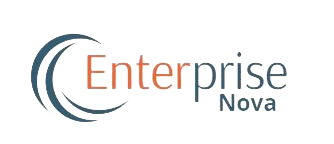In the artificial intelligence (AI) field, it is not often that a newcomer can take on the industry giants. But that is exactly what DeepSeek R1 is doing. This new AI model is not just catching up to OpenAI—it is making a serious impact. The most impressive part? It is offering top-tier performance at a fraction of the cost.
With the launch of DeepSeek R1, it now matches OpenAI o1 in both performance and versatility. What makes it even more appealing is its open-access design and MIT license, allowing businesses and developers to use it freely for commercial purposes. This makes DeepSeek R1 a top choice for anyone looking for a powerful and flexible AI solution.
“According to DeepSeek, R1 wins over other popular LLMs (large language models) such as OpenAI in several important benchmarks, and it is especially good with mathematical, coding, and reasoning tasks.”
What sets DeepSeek-R1 apart is not only its impressive features but also its affordability and accessibility, highlighting it as a significant progression in the AI domain.

DeepSeek-R1 has been designed to excel in tasks that demand high-level cognitive abilities. This includes logical inference, advanced mathematical reasoning, and solving real-world problems in real time. Reports suggest that in some key areas, such as mathematics and software development, DeepSeek-R1 matches or even surpasses the performance of OpenAI’s latest o1 model. This has led to widespread interest from developers, researchers, and organizations keen to explore its potential.
A notable aspect of DeepSeek-R1 is its affordability. While numerous advanced AI models necessitate considerable financial resources for access or implementation, DeepSeek-R1 is claimed to be as much as 50 times less expensive than similar models from OpenAI. This affordability reduces the entry barrier, allowing smaller organizations, individual developers, and educational institutions to harness the capabilities of advanced AI without excessive costs.
Another major advantage of DeepSeek-R1 is its open-source nature. Unlike many proprietary AI systems that restrict user access, DeepSeek-R1 is freely available for public use. This accessibility enables developers to test out the model, incorporate it into different applications, and even tailor it to meet particular requirements. Through promoting teamwork and creativity, DeepSeek is establishing itself as a significant player in the democratization of AI technology.
For individuals keen on experimenting with DeepSeek-R1, it is widely available on the internet. Literally anyone can assess its usability and measure how authentic it is through various tasks, including automating workflows, improving customer service, creating software, and performing intricate data analysis. The model’s adaptability guarantees its relevance in various industries, such as finance, healthcare, education, and technology.
DeepSeek’s bold entry into the AI market challenges the dominance of established players like OpenAI. By offering a model that combines cutting-edge performance with affordability and accessibility, DeepSeek-R1 represents a shift toward more inclusive AI development. This shift has the potential to empower businesses and individuals worldwide, fostering innovation in ways previously limited by cost and exclusivity.
In conclusion, DeepSeek-R1 is not just another AI model; it represents a new beginning. It serves as evidence of how innovation can be made more accessible to everyone, breaking the known barriers that have long restricted AI’s benefits to a select few. As DeepSeek continues to refine and expand its offerings, the model’s impact on the AI industry and beyond could be profound. For now, the ability to test and use DeepSeek-R1 is a unique opportunity for anyone looking to explore the possibilities of AI without the high costs typically associated with such technology.

